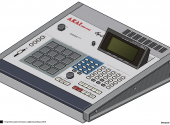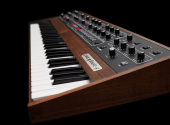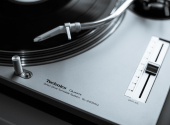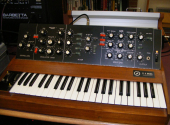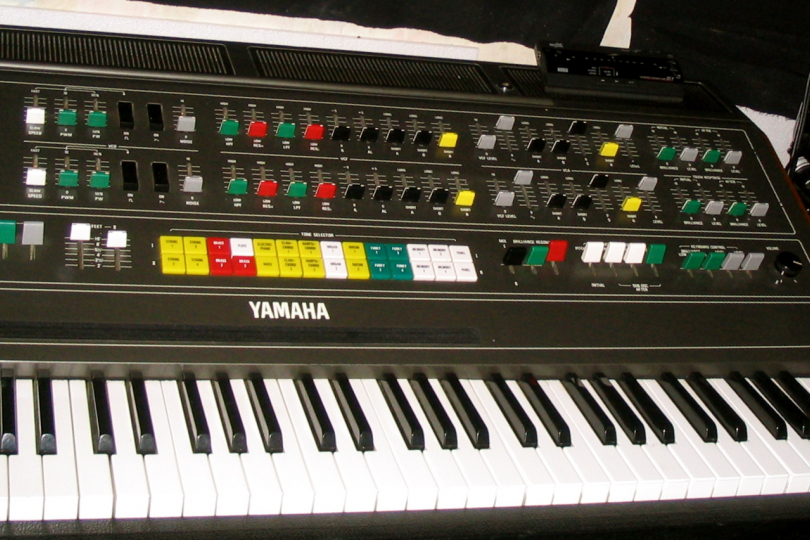
The Gear That Made Us #4: The Yamaha CS80
Used on the original Blade Runner soundtrack, for the bass on the iconic 1980 Doctor Who theme, as well as by countless groundbreaking artists, the Yamaha CS80 aimed to shake up the analog synth world when it came onto the scene in 1977. Join me in this piece to explore a deeper look at why it is still considered as one of the best synthesizers available today in the fourth installment of The Gear That Made Us.
Making a statement
The pulsating sense of space and wonder which seems to provide the perfect blanket of sound for the now infamous theme tune composed by Vangelis for Chariots of Fire in 1981 is just one instance where the Yamaha CS80 helped to make its mark in the world of composition. While it would have set you back £4,995 back when it first became available, in today's terms that equates to around £25,000. It is without a doubt considered a rare and sought-after item in the analog synth world.
Looking back at its inception, when Yamaha first brought the device to market, some say the Japanese company actually made a loss on every model sold. Despite this, they were adamant they were going to make it a significant item with the aim to make a statement about their entry into analog synthesis. Prior to the CS80, Yamaha had already released the EX1, GX1, and HX1—though these were more organ than pure synthesizer—and it was this new addition that had much more advanced and capable functionality which allowed for more artistry and nuanced technique.
Just as if you had bought the synthesizer back in the late ’70s, today the item weighs about 100kg—certainly somewhat of a substantial amount! When moving it, great care is needed to ensure that it doesn’t go out of tune and it is certainly not something that can be used effectively without a bit of effort. In fact, for the modern producers of the day, to use it with the MIDI protocol (Musical Instrument Digital Interface), an additional retrofit kit from Kenton is required to bring it into line with more modern synthesizers. For the ultimate fanatics, going down this route would be the way to enable them to play their own versions of Vangelis’ hypnotic lines like the one that can be heard from the video above with ease.
Pushing the envelope
While Yamaha also released the low-priced, 4-voice CS50 and mid-priced CS60 when the CS80 came to the scene, it was the latter that had the most impact in the music world and was the machine that became the most sought after—even if it was by far the heaviest! In fact, if it hadn’t been for the more programmable and affordable Prophet 5, the Moog’s Polymoog, and the Oberheim Eight Voice which were released around the same time, it is likely the Yamaha CS80 would have been the most popular synthesizer of its time.
Despite the competition, there are numerous aspects to do with the device’s sound sculpting capabilities which ensured that the machine would become the go-to choice for many leading artists and film composers as briefly touched upon in the last section. Michael Jackson himself uses one in his “Billie Jean” and it was used by pioneering artists such as Kraftwerk, Brian Eno, and Stevie Wonder to great effect.
In the below video you can see a great demonstration of the CS80 being used as part of the composition for the 1980 Doctor Who theme in combination with an ARP Odyssey and Roland SVC-350. Here, composer Peter Howell manages to combine numerous unique sounds with great skill resulting in something that has managed to stand the test of (recent) time.
As demonstrated by Peter, it is through the creative use of sound-shaping tools like the ring modulator which are part of the charm of exploring a synth like the CS80 but also that enable unique sounds not commonly heard. Today many plug-ins and VSTs (Virtual Studio Technology) are available for music producers to download or buy and use as part of a digital studio but it has to be said that having a physical device to explore music with like the CS80 is incomparable when it comes to crafting and creating unique sounds for use in a track.
Express yourself
As touched upon in the last section, to create great sounds you need the resources and capability to be able to do so. I think that this is a significant reason why the CS80 was so well-received by composers of the time when it first became available. It should be mentioned that the CS80 wasn’t one of the leading devices of its time when it came to the amount of presets that it provided but then perhaps it was this limitation that further lent itself well to the act of creation. As briefly demonstrated in the below clip, Vangelis was able to discover many avenues and possibilities when using the instrument which worked well with his approach to composition—getting ideas out and refining them later.
Born in Greece and sometimes referred to as a "new-age" composer despite his dislike for the term, Vangelis has used keyboards substantially throughout his musical life and has used the CS80 on all of his albums since 1977. Due to his focus on using keys for composing, it is then perhaps more significant that the composer himself once said the machine is "the most important synthesizer in my career—and for me, the best analog synthesizer design there has ever been."
One aspect of the piece of kit that seems to be broadly well received by its users, in tandem with its 61-note keyboard and weighted keys, is the inclusion of polyphonic aftertouch. While the depth of sound that can be created already packs a sizable punch with upper and lower synth sections available that can be combined as well as two independent oscillators per eight-voices (pulse and saw)—and this is before we even get to the filters, LFO or ribbon controller—the addition of the more refined aftertouch can allow for more controlled modulation speed and depth plus volume and brightness. Unlike traditional aftertouch where the timbre of a whole chord will be affected if more pressure is put onto keys, this more nuanced version is able to pick out an individual note within a chord and alter the sound of just that one note. The end result is an incredible amount of added expression which only helps to give life to the ideas and sounds that a composer such as Vangelis may envisage.
When 4-voice just isn’t enough
While the times have changed today and it isn’t uncommon to find synthesizers that can offer 16-voice (the Moog-One for example), back in the late ’70s, to suddenly have access to an 8-voice synth like the Yamaha CS80 must have been no small thing. As with any loved bit of gear nonetheless, it is important to highlight that it is the sum of all these great innovations that help to result in the final masterpiece. Just like any great track has numerous elements and considerations to finalize before one can be satisfied, in the case of this synthesizer it is not the extended 8kHz frequency range nor its classic sound, nor its limited availability but the combination of all aspects that makes it such a fascinating item. To quote the 1984 original Dune film (which the CS80 was actually used for to help create the soundtrack), the Yamaha CS80 is a world beyond your experience, beyond your imagination.
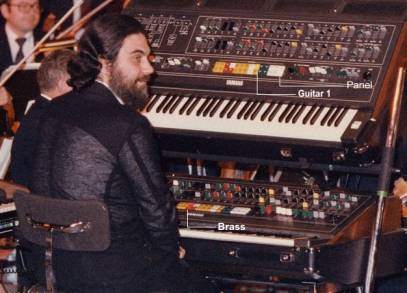
So what do you think of the Yamaha CS80—does it deserve to be noted as one of the best analog synths of all time? Let us know in the comments below.
If you have found an error or typo in the article, please let us know by e-mail info@insounder.org.


